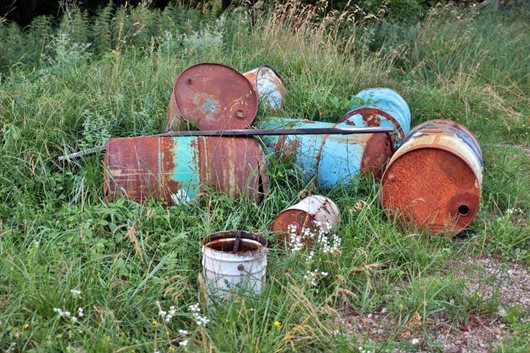About Contaminated Land
Contamination of the land can arise from past industrial processes, waste disposal, illegal dumping, accidental spillage of substances and in some instances may be natural rather than man-made.
In the past there were far fewer operating restrictions for industries than we have today. Many industrial activities were carried out with little regard for their impact on the environment, particularly prior to the Control of Pollution Act 1974. The type of contaminant can vary widely from site to site. Some of the more common problems include oils and fuels, domestic and industrial waste, heavy metals and solvents.
Different contaminants can cause problems in a variety of ways.
For example, they can:

- travel through or move across the ground and pollute water resources such as underground water, lakes and rivers
- Be inhaled as dust particles
- Be absorbed into, or irritate the skin
- Be taken up by plants that are grown in the ground to be eaten by humans or animals
- Break down to create potentially dangerous gases including methane, carbon dioxide etc.
- Have a detrimental affect on building materials e.g. cement
It is therefore important to identify areas where contaminants are likely to be present and to deal with them so that the site is made suitable for its use, and to negate any affects to neighbouring land.
What is the legal definition?
Contaminated land is defined by Part IIA of the Environmental Protection Act 1990 as:
“Contaminated land” is any land which appears to the local authority in whose area it is situated to be in such a condition, by reason of substances in, on or under the land, that:
(a) significant harm is being caused or there is a significant possibility of such harm being caused; or
(b) pollution of controlled waters is being, or is likely to be, caused.
The act and statutory guidance produced by the government provide further definitions and details on how local authorities must fulfil their duties in identifying and dealing with contaminated sites.
Why worry about contaminated land?
Contaminated land may present a hazard to people using the site and it may affect plants growing there.
Exposure to contaminants can be through breathing of dust or gasses, touching contaminated soil and dust, or by eating food grown on the land.
Pollution draining from contaminated land in liquid form can pollute groundwater (a major source for drinking water) and rivers or ponds.
Some contamination may cause damage to buildings and underground services like water pipes, and some can pose a risk of explosion or fire.
The effects are varied and difficult to quantify for any individual site.
What are the health effects?
The effects of contaminated land on human health and on the environment will depend on the type and amount of contaminant involved. As all sites will be different, they have to be considered individually but using the same consistent approach.
For the vast majority of sites the health impacts on people will be very small.
However there is evidence that contaminated land can cause impacts to health ranging from skin irritation to breathing difficulties and more cancer and birth defects.
Make a Contaminated Land Report or Enquiry
Should you wish to make a reportor have a general enquiry relating to contaminated land please use the reporting form on the following link:
REPORT
Should you wish to request a contaminated land search please visit our contaminated land conveyance search webpage.